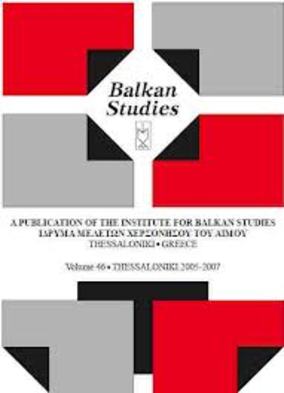Le passé des territoires : Kosovo - Metohija (Xle-XVIIe siècle)
Part of : Balkan studies : biannual publication of the Institute for Balkan Studies ; Vol.38, No.1, 1997, pages 31-61
Issue:
Pages:
31-61
Parallel Title:
The past of the territories : Kosovo and metohija (11th-17th century)
Section Title:
Articles
Author:
Abstract:
Kosovo and Metohija represent the territory in the central part of theBalkan Peninsula with natural borders in the south, west and partly in thenorth-west, while from its adjacent regions in the east and north east thisterritory is not separated by mountain barriers but only by some morphologydistinctions and the terrain characteristics. Their present names originate fromthe late Medieval Age. As Serbia expanded its territories towards the southeastto the disadvantage of Byzantine Empire, during the 11th and particularlyin the 12th century, these regions became the border area between Serbia andByzantine Empire. During the 13th and 14th century they represented thecentral part of the Serbian medieval state, its administrative and religiouscenter, its economic, mining, agricultural, commercial and cultural most developedareas with dense road network and a relatively large number of significantand big urban, religious and cultural centres. From the end of the 14thcentury, Kosovo was the border area between the Ottoman Empire and Serbiaand finally in the middle of the 15th century it fell into the Sultan’s hands.The establishment of Turkish administration on the whole territory ofKosovo and Metohija in the middle of the 15th century introduced the periodof crucial changes in the economic, cultural, social and ethnical structures inthis region, that resulted in gradual Islamization of the local population that,with the progressive influx of the Turkish and Albanian elements, lost itsrelative uniformity that had existed in the end of the Medieval Age. The bigwars in the 17th century intensified the old financial and legal insecurity evenmore and culminated in the large-scale ethical and confessional restructuringthat took place after the Turkish-Austrian war in the end of the century. Sincethat time Kosovo and Metohija have experienced the long period of confessionaland ethnical stratification that has directed the development of socialrelations on this territory in this century and the modern history of this part ofthe Balkan Peninsula.
Subject:
Subject (LC):
Keywords:
Kosovo, Metohija, 11th-17th century




